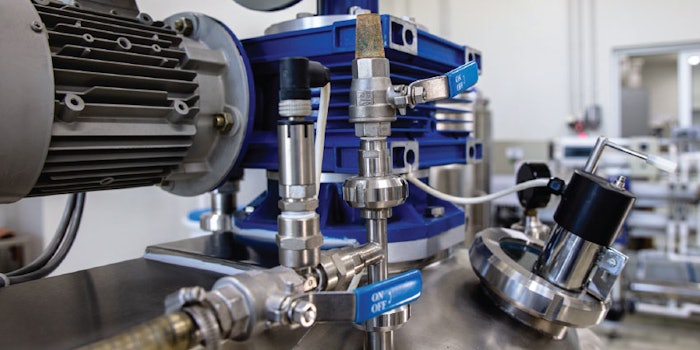
Read the full feature in the July/August 2022 digital edition here. . .
Emulsions are a commonly used vehicle in cosmetics for hair and skin. Containing both a hydrophilic and lipophilic phase allows for the delivery of varied functional ingredients—from humectants and vitamins, to softening oily emollients. Gibbs Free1 energy equation (see Equation 1), derived from the second law of thermodynamics, describes the energy required for a change to take place.
ΔG = γA − TΔS Eq. 1
Here, ΔG is free energy of emulsification; γ is the interfacial tension; A is the interfacial area; T is temperature or heat; and ΔS is the entropy of mixing. In the case of emulsions, it demonstrates the forces affecting emulsion creation2 and stability, with all emulsions being thermodynamically unstable.
To create an emulsion, energy must be put into the system to overcome the immiscibility of ingredients. Shearing forces reduce droplet size, as smaller droplets generally give longer stability. To overcome the emulsions spontaneous splitting to the lowest free energy, emulsifiers are employed to reduce the interfacial tension of the phases.
Raising temperature encourages emulsification, liquifying solid formula constituents and increasing miscibility. Temperature control and powering mixing equipment account for most of the energy used during the emulsification process. Reducing this energy consumption has been a decades-long effort by industry and directly relates to more recent concerns over carbon emissions. The present article describes such efforts and demonstrates, with in-use energy-consumption metrics, how novel low-energy w/si emulsions, enabled by a PEG-7 dimethicone ether, can decrease the energy used during production, and how this translates to a lower carbon footprint.
. . .Read more in the July/August 2022 digital edition here. . .
References
- Cox, R. (accessed 2022, Jun 6). Emulsion technology. Available at http://www.scsdlc.com/LBR/G20111220103559-128268377/docs/RC_Emulsions_2019.pdf
- Tadros, T.F. (2009). Emulsion Science and Technology. Wiley-VCH Verlag GmbH & Co. KGaA, Weinheim.











